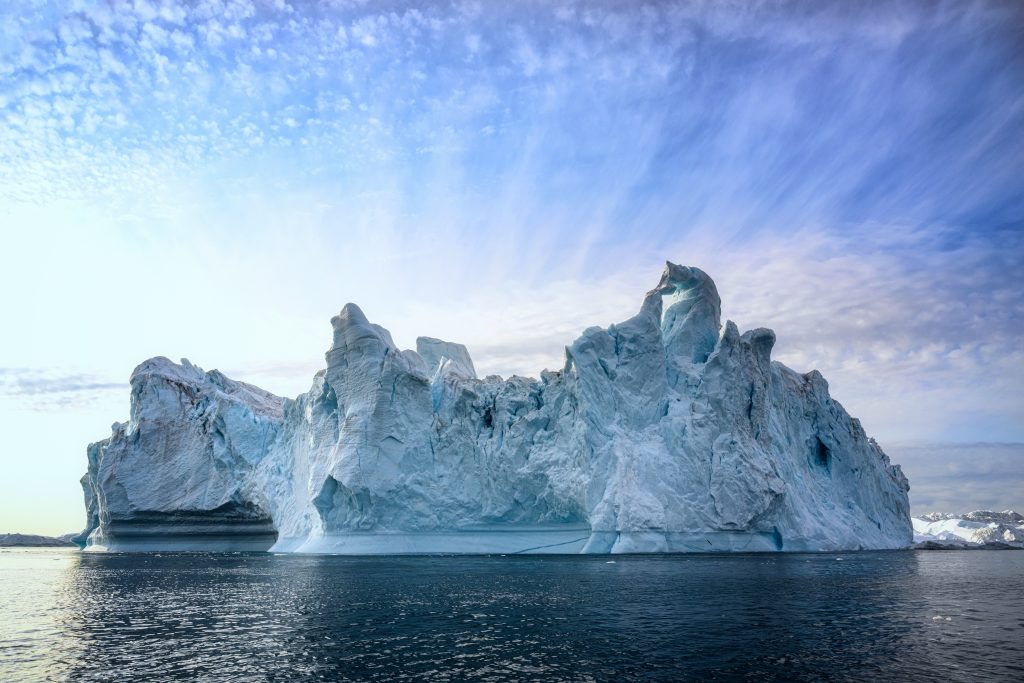The age-old pastime of sitting in the grass and looking to the sky, picking out the clouds that look like a ship with full sails or an elephant or a dolphin, is a pleasant game of imagination. But when I would look to the clouds, I hardly ever imagined the effect that those collections of water droplets that cover two-thirds of the Earth’s surface at any one time could have in climate change.
Clouds, from the horizontal sheets of stratus clouds to the dark rain-bearing forms nimbus clouds and everything in between, have an integral role to play in regulating temperature. Formed by water evaporation from oceans, lakes, and streams, as well as transpiration from plants, clouds are condensed water or ice in combination with sea salt, dust, and other small particles.
In terms of temperature regulation, when there are clouds during the day, they reflect some of the sun’s rays back into space which results in cooler temperatures. However, at night those same clouds prevent heat from the Earth’s surface from escaping into space, causing warmer temperatures. Without clouds, the sun has no gatekeeper to keep its rays from the Earth’s surface and the temperature rises. But at night, that same cloudless sky allows temperatures to cool as heat from the Earth’s surface releases out into the atmosphere. “At the heart of the difficulty of understanding how clouds affect climate change is that clouds both cool and heat the planet, even as their own properties are determined by the cooling and heating”, explains the International Satellite Cloud Climatology Project (ISCCP). The ISCCP details that 30 to 60 percent of the sunlight that hits clouds is reflected, which results in their ethereal white color. However, if the Earth were to have no clouds, they predict that it would absorb 20 percent more heat.

But why is this important? Is something happening to the clouds right now? A recent report published in the journal The Cryosphere explains how clouds (and their absence) contributed to massive ice melt this past summer in Greenland. Home to glaciers, ice sheets, hot springs, Northern lights, as well as the largest national park filled with oxen, polar bears and more, Greenland is a special place, especially for the over 56,000 people that live there. It is also an extremely important indicator of the effects of human-induced climate change due to its massive ice sheet, the second-largest in the world, that holds around 8 percent of the planet’s freshwater.
This past year, high-pressure systems caused a lack of cloud cover in southern Greenland and the formation of thick, warm clouds in its northern region. This resulted in an increase in solar radiation absorption in the south due to the lack of clouds. In the north, the clouds forming there blanketed the region and kept the heat from escaping into the atmosphere, resulting in “above-average melting in the ice sheet below”, as explained by Scientific American. Journalist Chelsea Harvey continues, “Ultimately, both side effects – clear skies and little snow in southern Greenland, and warm clouds in northern Greenland – helped to drive high rates of melting on the ice sheet last summer.” In terms of potential consequences, Greenland has seen some record-breaking years as of late and this past summer was the highest amount of total mass lost due to ice melt. In general, the Arctic is beginning to expect more uncertain summers in the future. The Northern Hemisphere as a whole, which is involved in the air circulation cycle of the Arctic, is expecting these sudden events to have lasting consequences.

As Quanta Magazine explained in their article “A World Without Clouds” by using a methodology of simulation, clouds could play an even larger role than we can imagine in the climate crisis. Cloud formation becomes threatened as the Earth gets warmer, and the Earth continues to get warmer without clouds reflecting sunlight. The biggest reason for cloud loss is the warm air coming from both warmer oceans and a warmer atmosphere. But while studies have extenuating factors that could impact predictions, like changing global wind currents, it’s clear to see that scientists in the Arctic and across the world will be looking to the clouds just as they have before, and telling us what they see.
 Food
Food Farmers
Farmers Sustainable Living
Sustainable Living Living Planet
Living Planet News
News